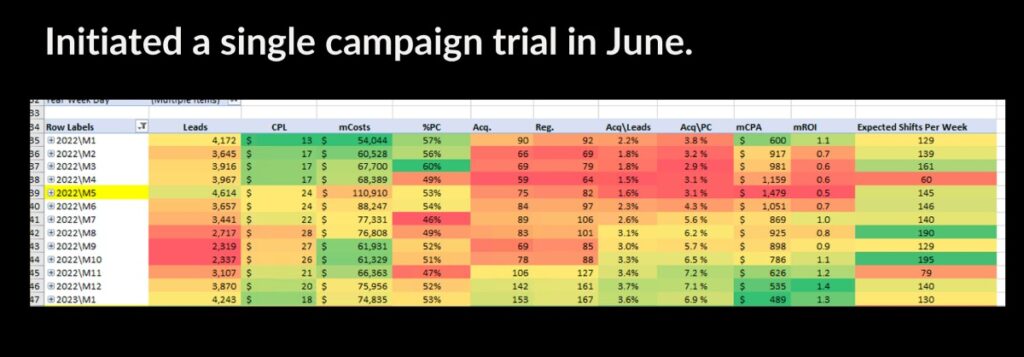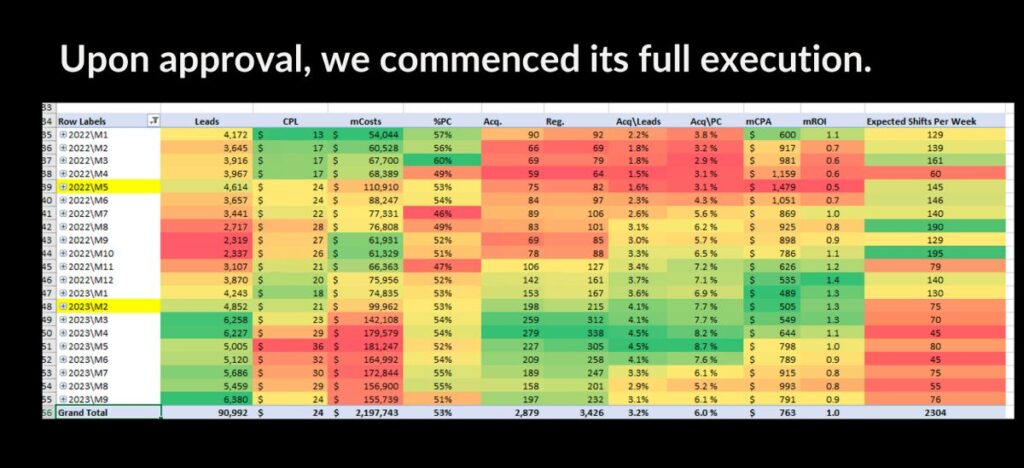Education Lead Generation That Turns Traffic Into Enrollments
Client Overview:
Prospective clients often want a PPC case study that proves how to generate leads that become paying students. This walkthrough is a converting traffic into leads case study for education: we applied an e-commerce PPC case study mindset to shift from chasing volume to building quality lead generation that improves conversion rate and ROI.
The baseline we inherited was a busy PPC engine driving form fills into a phone-led sales funnel. On the surface the program looked efficient across multiple markets, but the operating model measured success by volume, not value, which shaped everything from campaign objectives to daily targets.
Taken together, this context explains why raw lead counts rose while revenue lagged. By optimizing campaigns for the Lead event, PPC rewarded the cheapest form submissions instead of the most likely future students. That disconnect between marketing metrics and enrollment economics sets up Challenge 1, where we pivot from volume to value.
Optimizing only for form fills trains platforms to find people who submit forms, not people who buy. Daily quotas push budgets toward the cheapest clicks and impressions. Success was defined by cost per lead, while the business needed enrollments, healthy CPA, and sustainable unit economics from PPC.
We reframed the program from lead volume to revenue. The team passed offline conversions (actual enrollments) back to Meta and Google and fired a purchase event for every lead that became a student. This let campaigns optimize toward buyers while still capturing leads.
We also rewrote the operating model: start with the real conversion rate, derive an economically sound cost per lead, and then determine how many leads the budget should fund. Sales receives that number, regardless of historical quotas. The philosophy became fewer leads of higher intent, not more leads of lower value, which is the foundation of high quality leads in education.
Reducing lead volume triggered pushback. Fewer leads meant fewer calls for Sales and smaller lists for Email. It also signaled a downsizing of the call center: with less dialing required, several roles were no longer justified. While this lowered operating costs (wages, call minutes, tooling), it heightened internal resistance because the change directly affected headcount. Leadership therefore needed strong evidence before endorsing a shift away from volume-based KPIs.
Results from the rollout followed a predictable quality curve: total leads decreased at first, cost per lead rose, acquisition per lead increased, cost per acquisition declined, and ROI climbed. With confidence higher, budgets scaled in measured steps. By February of the following year, total lead volume surpassed the early baseline, budgets were materially higher, and acquisition per lead improved from 2.2% to 8.7%. Call-center shifts dropped, reducing operating costs while focusing effort on higher-intent prospects.
Before:

After:

After the early wins, the client asked to scale quickly to make up for lost time, despite our recommendation to expand in stages. Budgets grew faster than strategy and creative refresh cycles, cost per lead rose, and performance slipped. We corrected by dialing spend back, re-establishing a structured test cadence, refreshing messaging and audiences, and returning to disciplined, stage-gated scaling.
Education marketers do not need more forms; they need more students. By training platforms on purchases, budgeting from outcomes, and scaling with intent, PPC spend turns into enrollments more reliably. For teams comparing lead generation strategies or evaluating partners for the U.S. market, this approach aligns with the real intent behind education lead gen and higher ed lead generation – less noise in the funnel and more signal for growth.